This Week At Angama #69
31 May 2019 | This Week at Angama | Jeffrey Thige
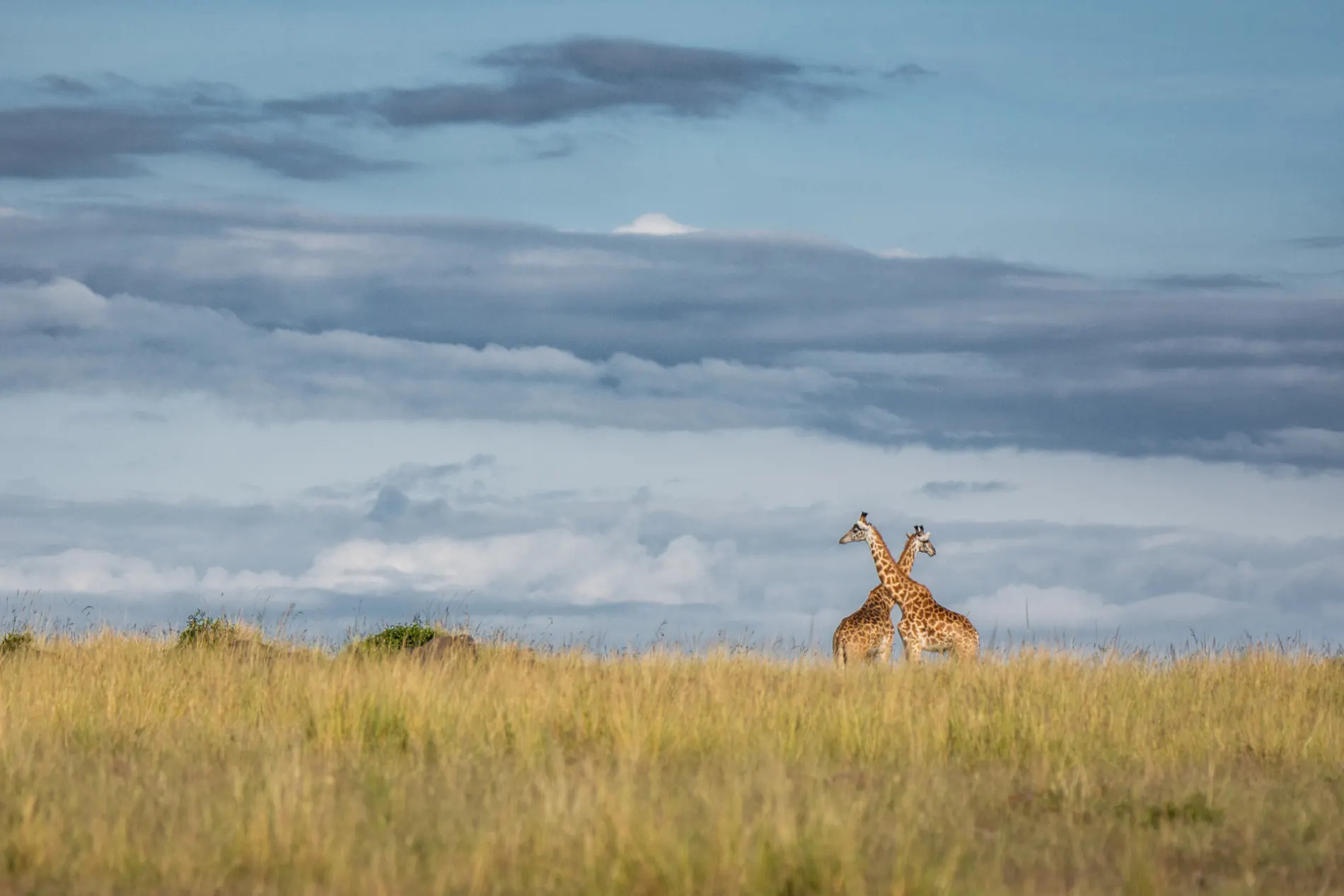
Driving up a slope near the main crossing point, I saw these two giraffe males sparring. Necking, but not with enough force to actually injure each other, this was clearly just boys being boys. [f 5.6, 1/2000, ISO 250]
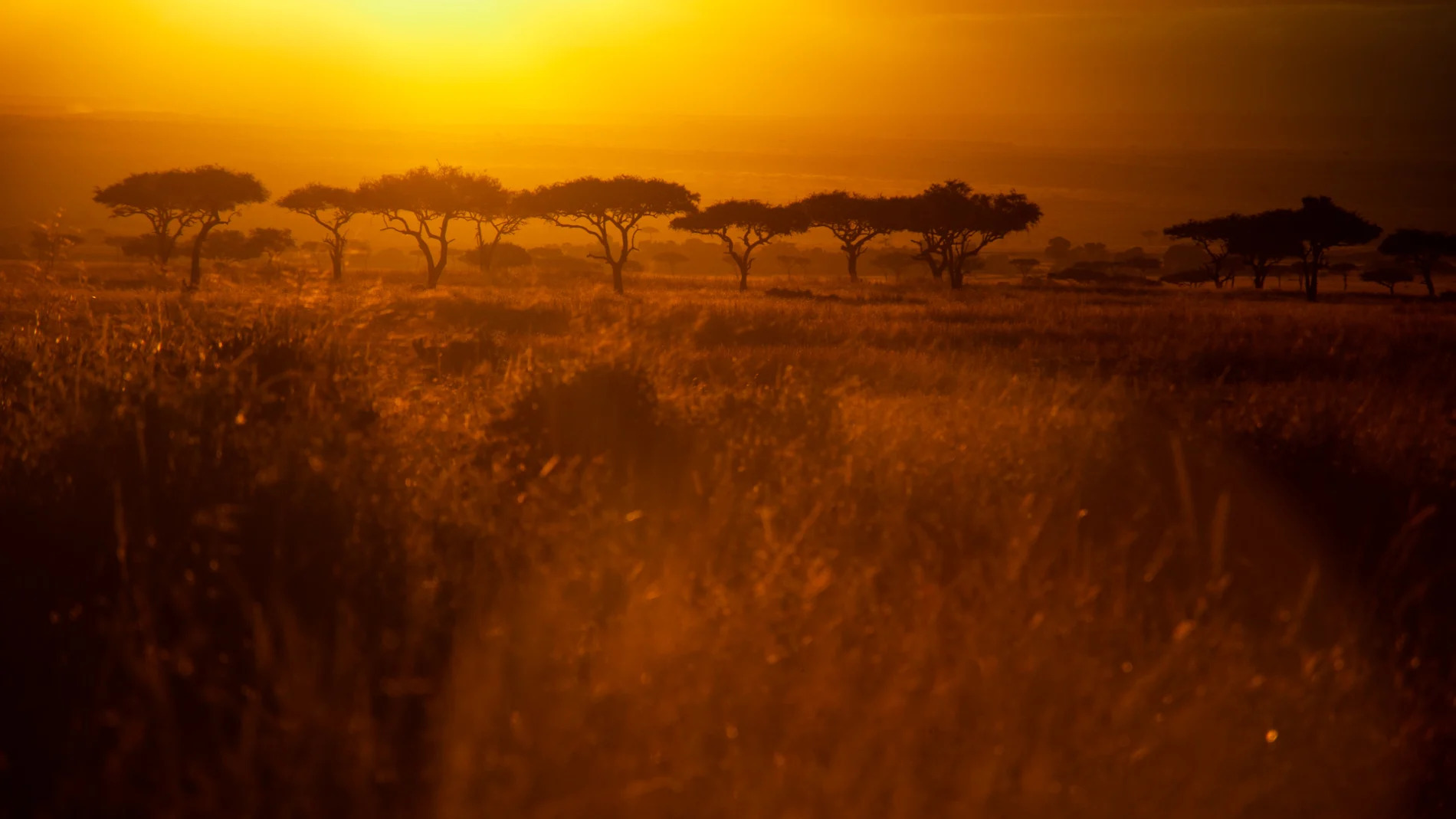
Getting those beautiful morning light shots means waking up very early to get out and look for subjects to photograph. Sometimes, luck isn’t on your side, but fortunately, absolutely everything looks spectacular in the golden light. Case in point, these ballanite trees and long grass. [f 5.6, 1/1600, ISO 250, -0.33]
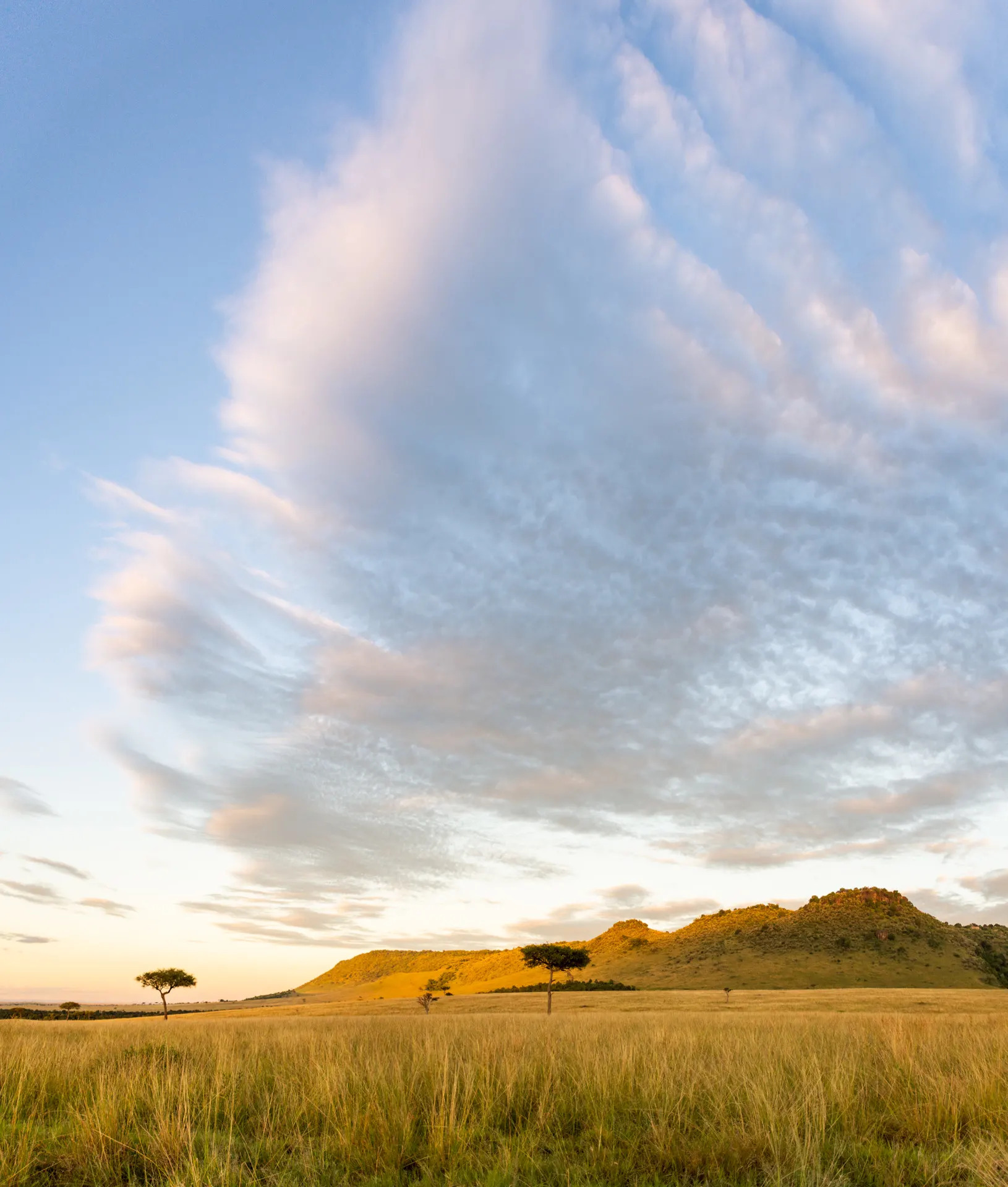
Shooting with the sun behind you results in everything in front of the camera getting proper exposure and little-to-no shadows. As the sun gets higher, shooting becomes more and more tricky. Here is a panoramic view of the lodge as seen from below in the early morning. [f 4.0, 1/400, ISO 320]
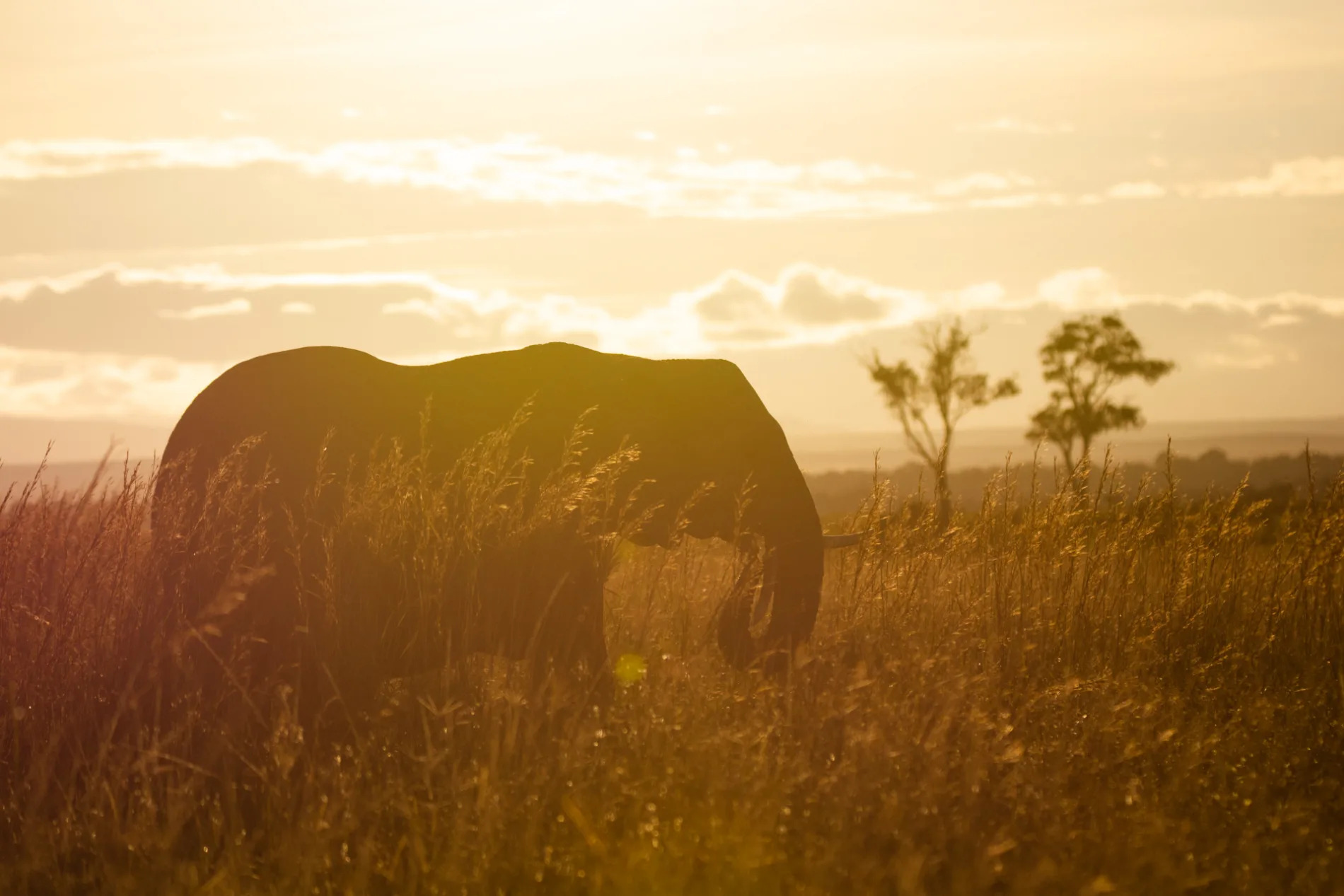
Although unorthodox, shooting directly into the sun, with the right subject and angle, gives an interesting effect. [f 5.0, 1/6400, ISO 200]

The Mara Triangle currently has an abundance of elephants of different ages, from old grumpy bulls to tiny playful calves. It is almost impossible to drive in the northern part of the Triangle without seeing a big herd. Here, a family gathers gracefully in the morning, feeding as they stride towards the sun. [f 5.0, 1/1000, ISO 250 -0.33]

A mouthful of hot air balloon! It is very intriguing how a little change in angle can alter the entire perspective of an image. This angle shows an elephant seemingly taking a bite off of a hot air balloon. [f 5.0, 1/640, ISO 100 -0.33]
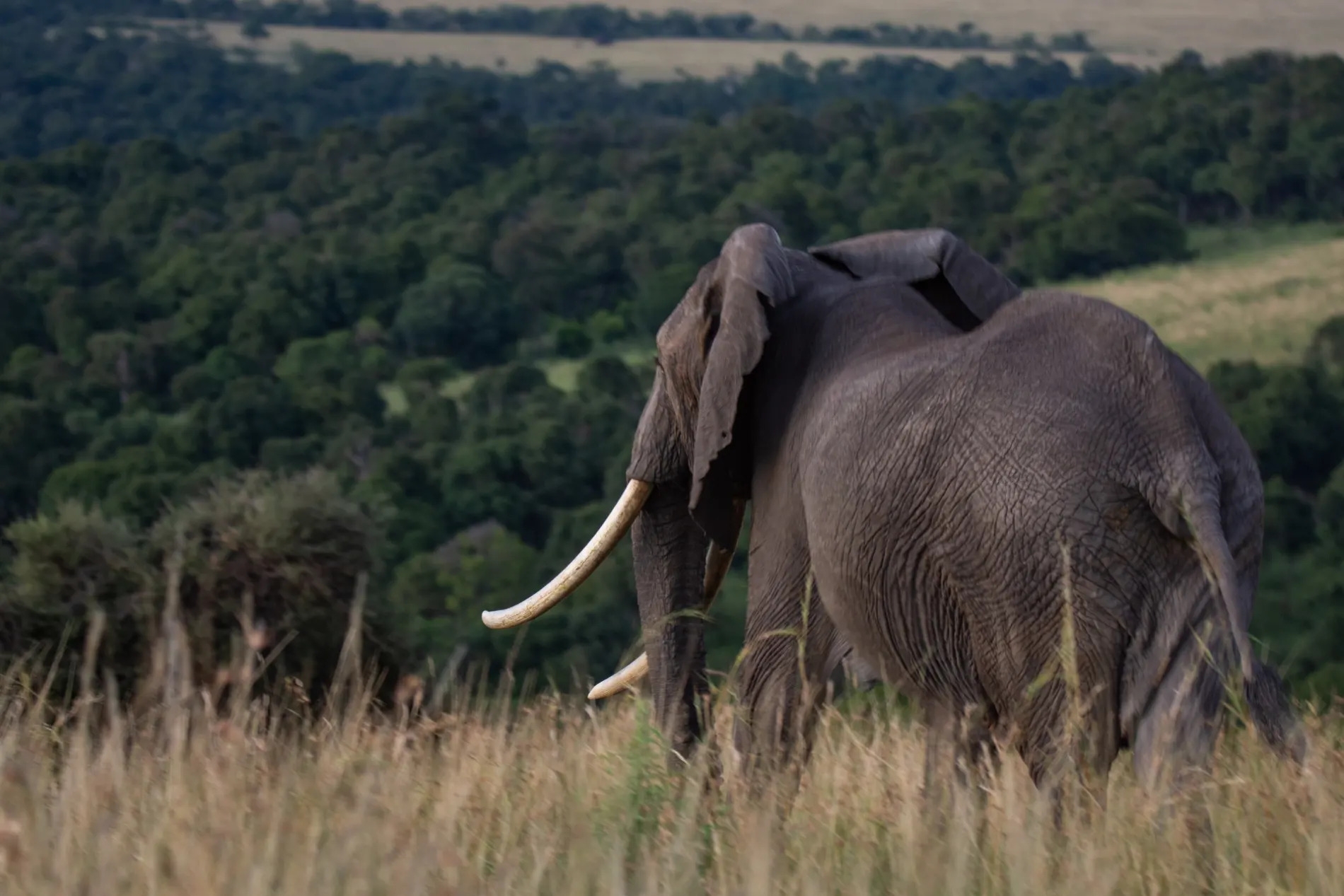
While this may not be a great shot, I was very excited to include it in this week’s post. The Mara’s elephants are generally not known for their long tusks, but this is by far the biggest tusker I’ve come across in the year that I have been here. [f 5.0, 1/30, ISO 250]
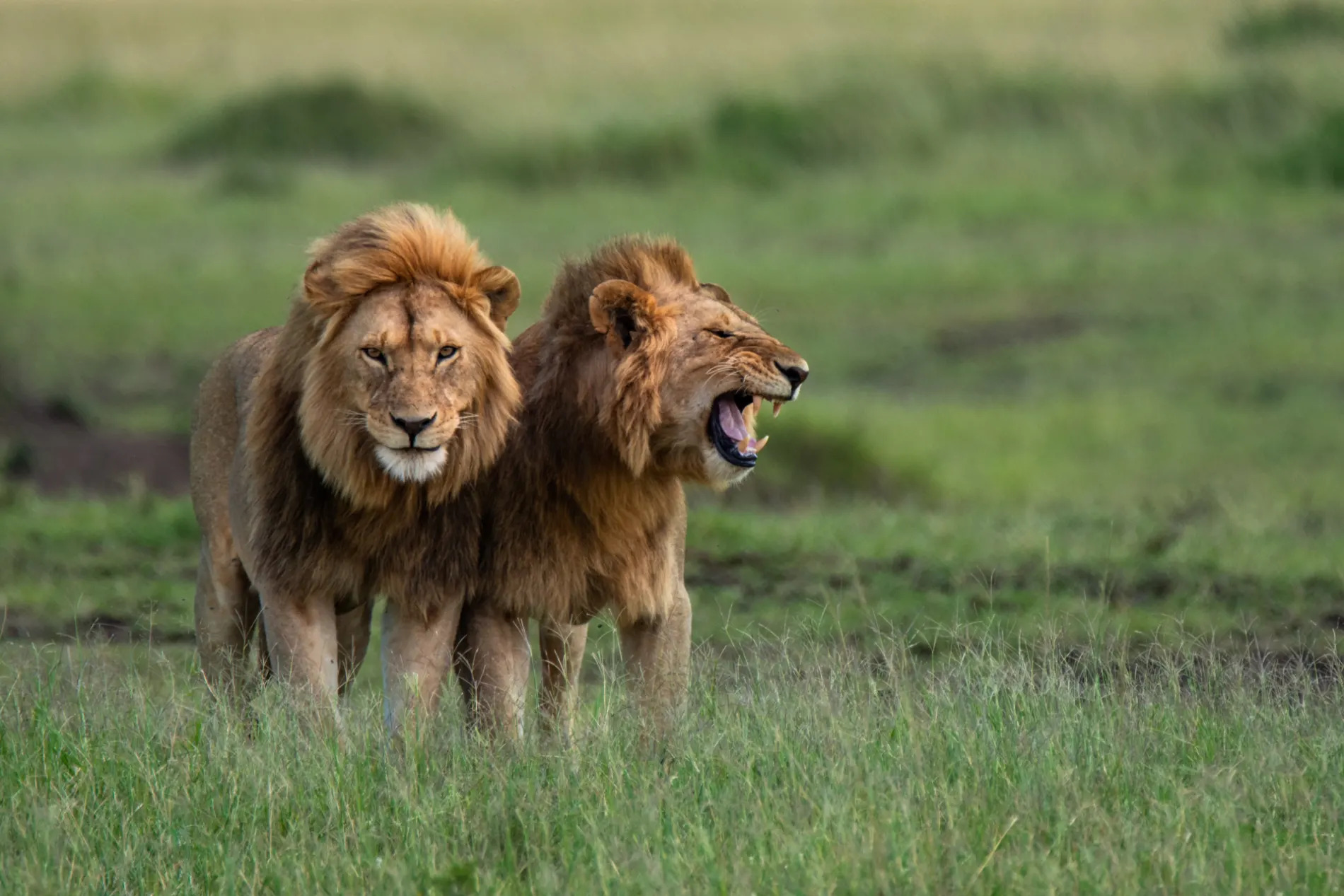
I haven’t seen these boys since late-January, so catching up and spending time with them was quite special. When I last saw them, their manes were still ragged, so it is exciting to witness them developing into big black-maned adults. I’m looking forward to their first pride takeover. [f 6.3, 1/500, ISO 250 -0.33]

An old, shabby lion walks slowly past some zebras with topis in the background. With a recent injury on his front left leg, he was a little slower than the rest of the pride. [f 5.0, 1/2000, ISO 250]
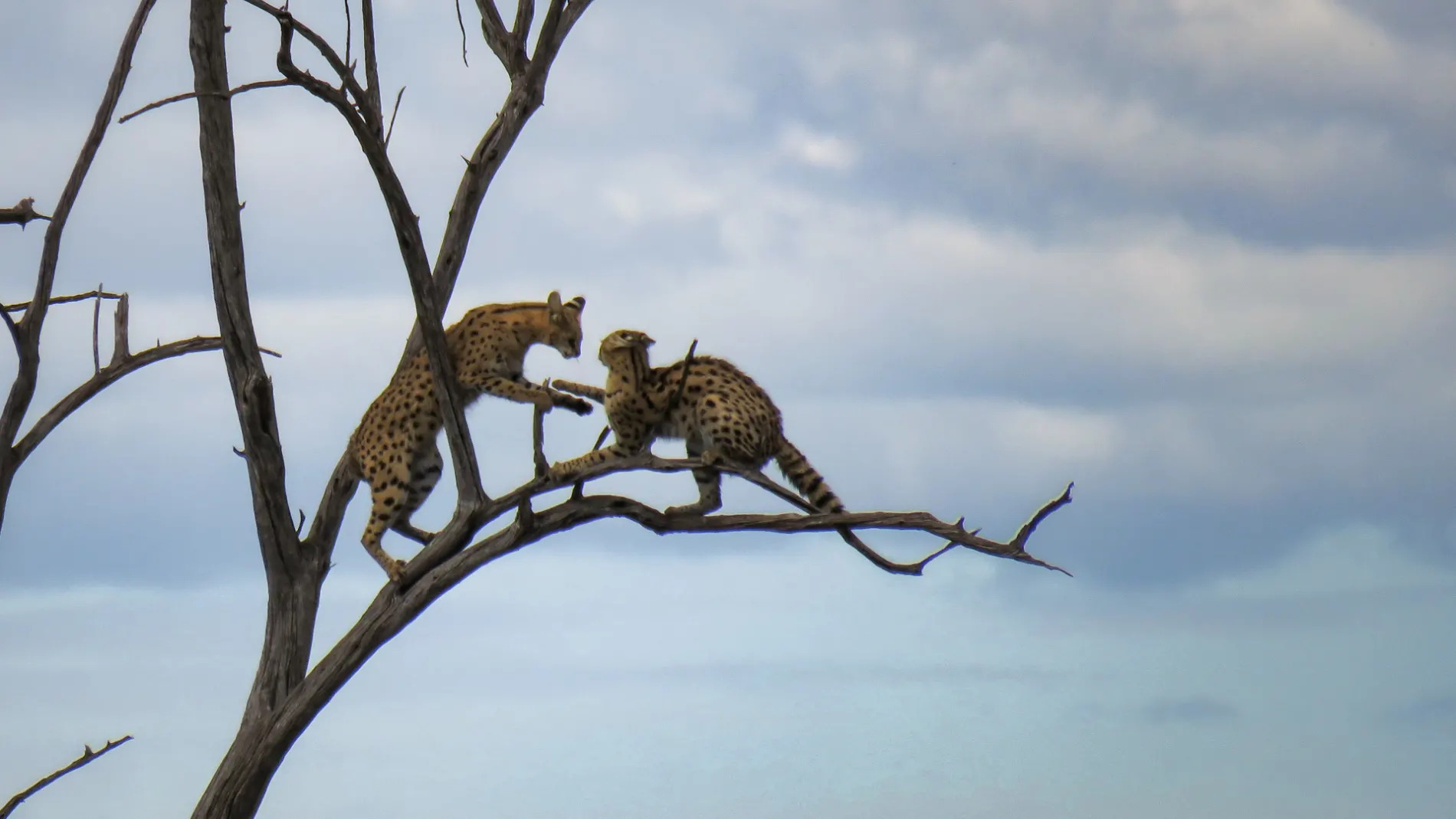
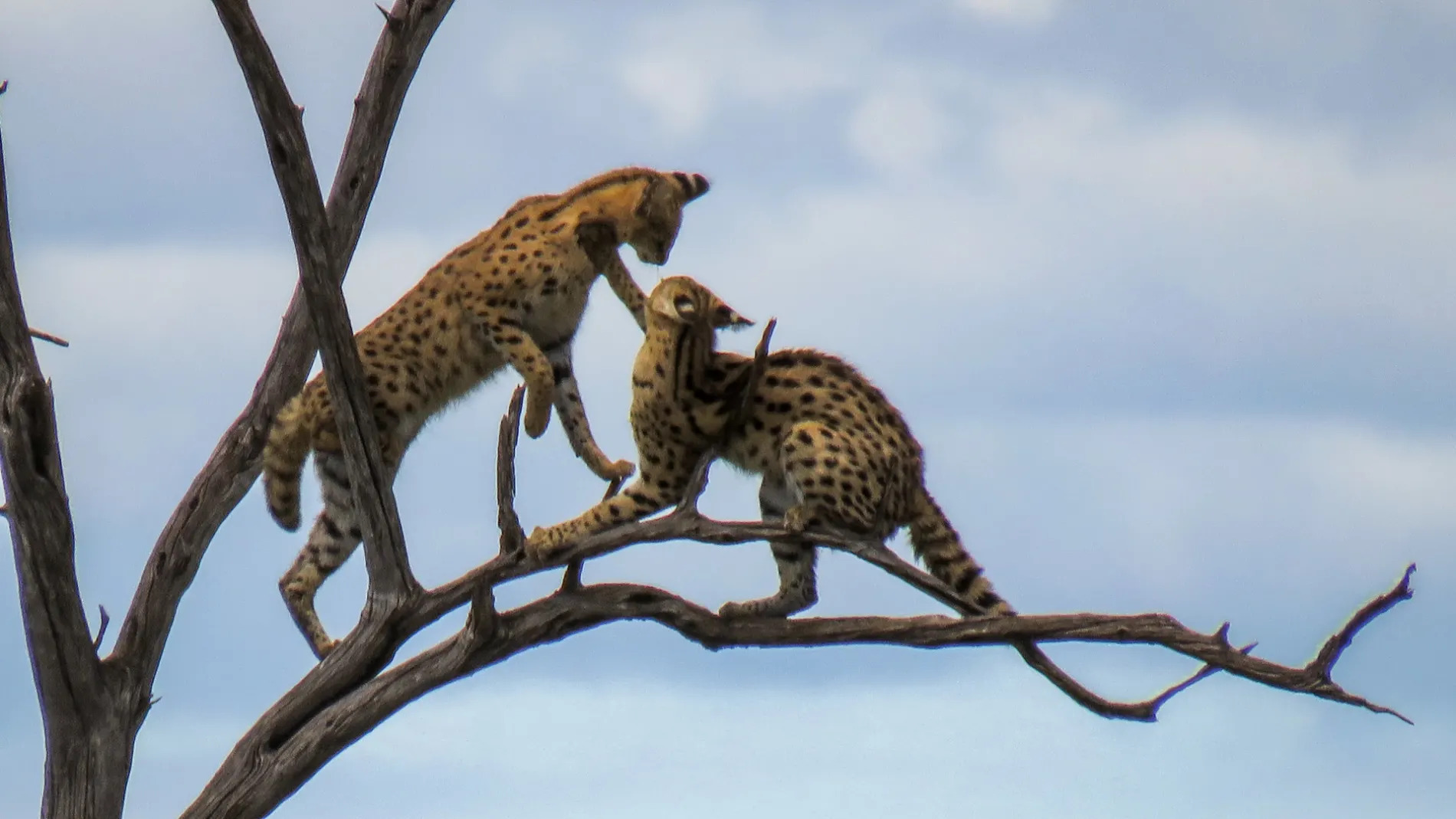
 Photograph series by Jackson Omanda
Photograph series by Jackson Omanda
After an incredible sighting of lions, guide Jackson drove off to find other interesting game. Hours later, he drove back to the same place to try and find the same lions again, but they had moved on. After a quick scan without his binoculars, he noticed some movement in the trees and was hoping that it was a leopard. Upon further investigation, he was stunned to see not one, but two serval cats on the branch of a tall tree. One of the servals launched an attack on the other and a battle ensued. Eventually, it ended with both of them plummeting to the ground. [f/6.5 1/400 ISO 100]

High-key photography is something I’ve been planning to try. It involves over-exposing the image and then exposing it correctly for just the subject, either in-camera, or during post-production. This works well when the sun is overhead, or too bright to get well-balanced exposure. [f 5.6, 1/500, ISO 200, +0.67]

A panoramic view of the southern Mara Triangle showcasing the expanse of the savanna plains and numerous hills in the distance. [f 5.6, 1/2500, ISO 250]
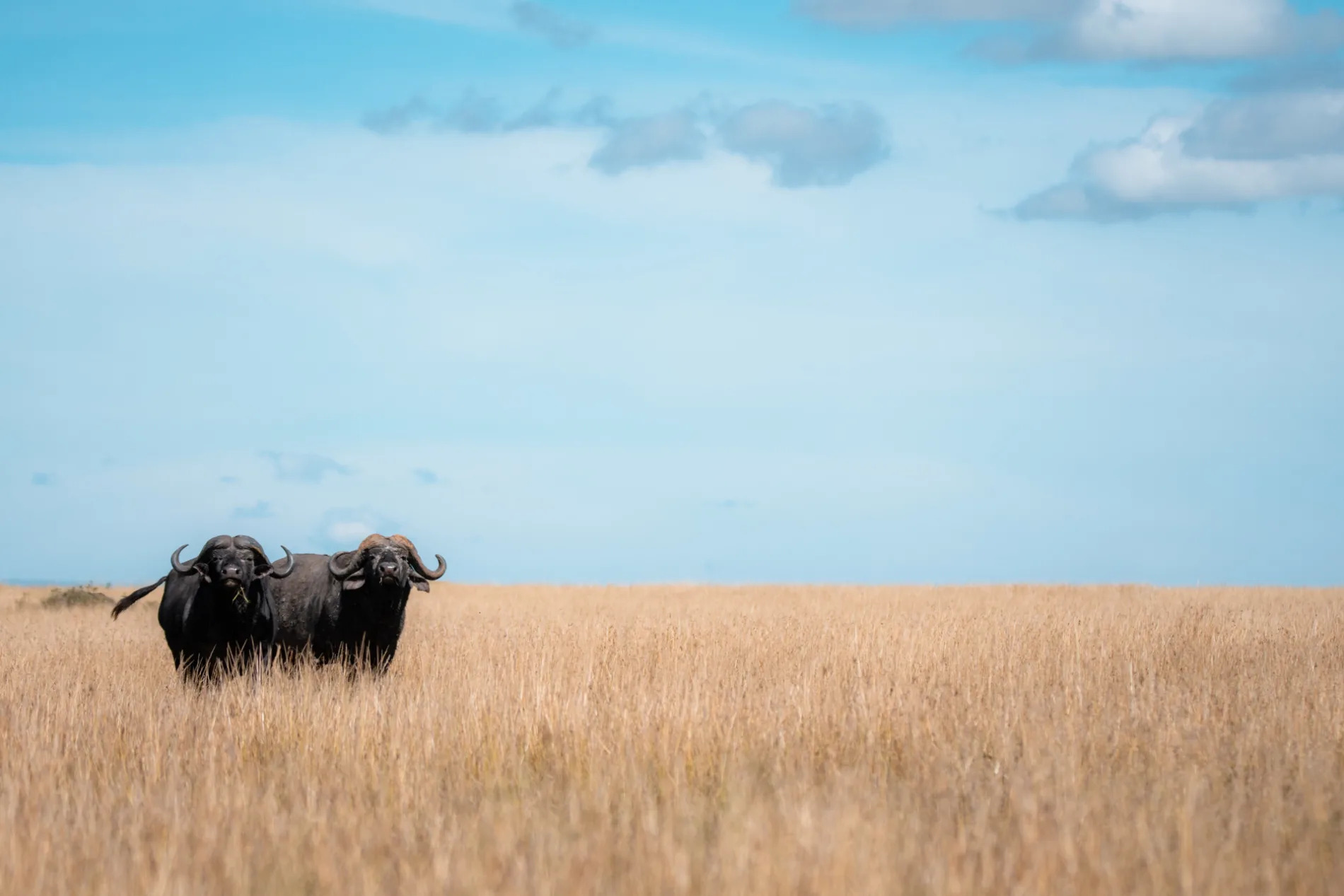
Buffalo can be very aggressive, particularly old boys that have been kicked out of a herd. When I pulled over to photograph these two, they immediately started pacing towards my car. I’m not the biggest fan of these types of situations so I only had time to get this one shot before fleeing with my tail between my legs. [f 450, 1/500, ISO 100, -0.33]
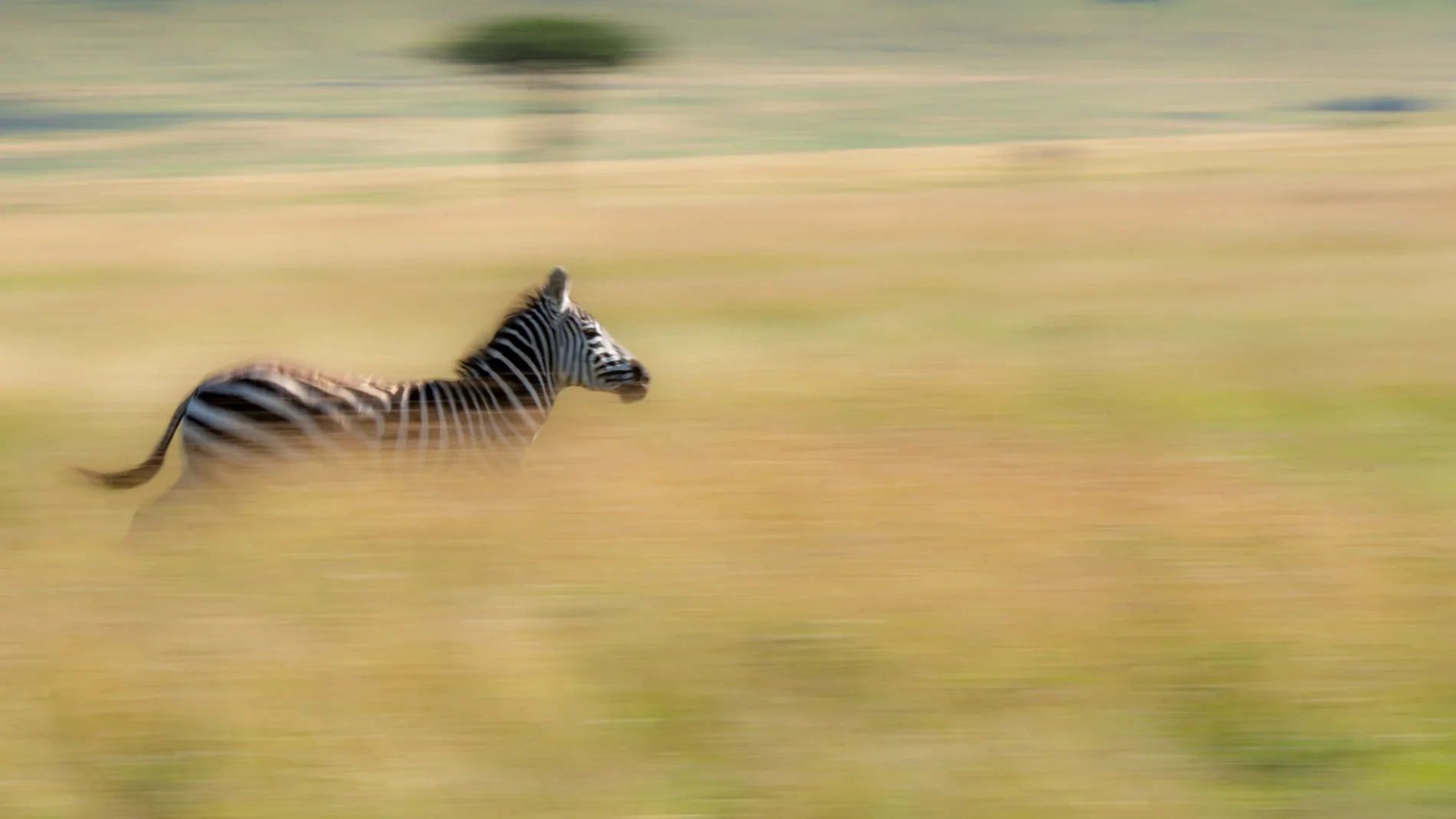
I find myself increasingly interested in panning shots. After close to a hundred failed attempts, I managed to get a decent shot of this zebra. My least favorite part of taking panning shots is how much time it takes to get rid of dust spots in post-editing. [f 32.0, 1/25, ISO 250]

Down south at the Kenya/Tanzania border, a single wildebeest seems so eager to get to the Mara, he just couldn’t wait one more month. In this shot, he is still in the Serengeti and a few frames later, he’s made it into the Mara. I’m already excited for this year’s Great Migration. [f 5.0, 1/4000, ISO 250]
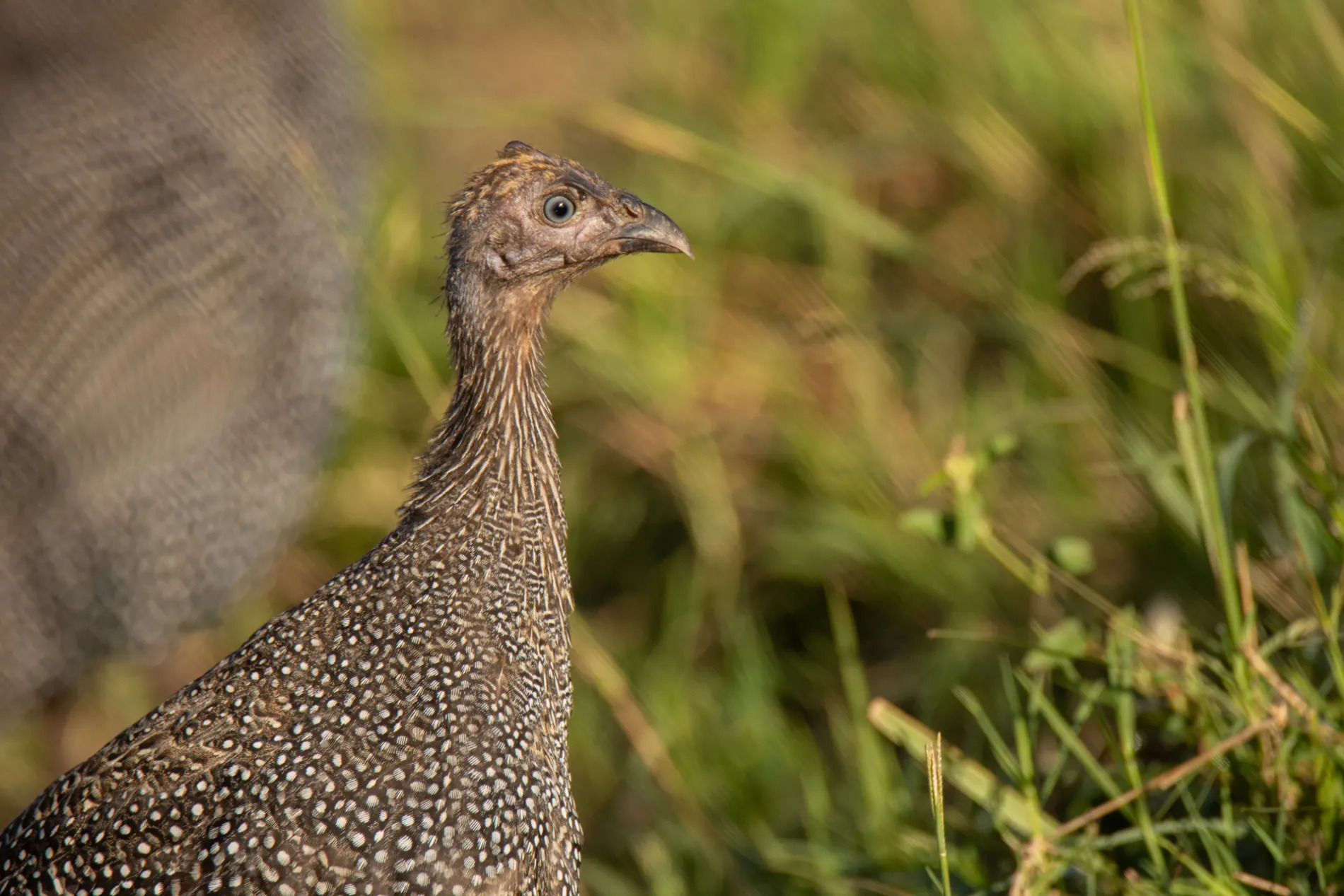
A young helmeted guineafowl. You can see the little helmet developing at the top of its head. [f 6.3, 1/640, ISO 250]
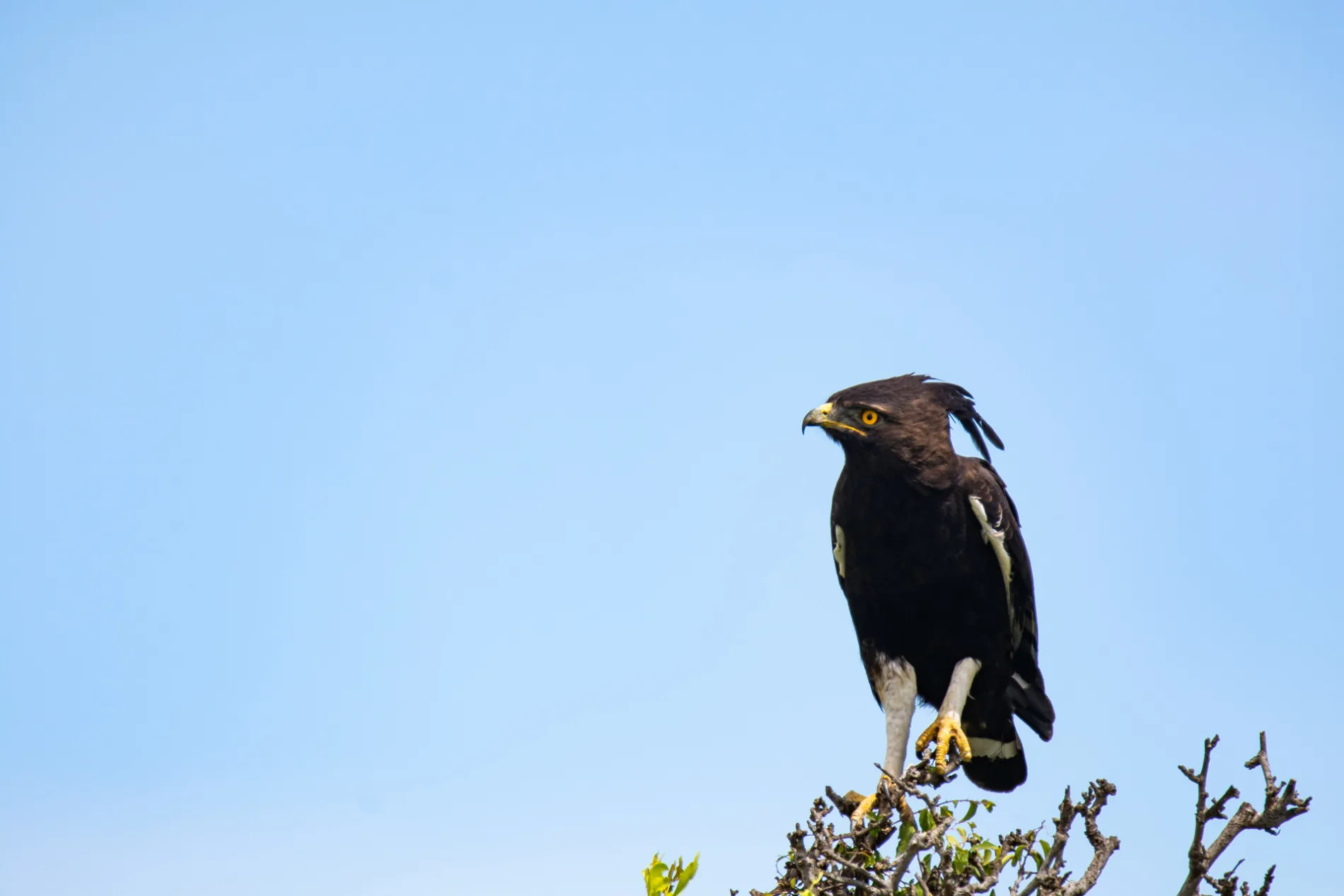
This week, the lodge has seen plenty of action. I witnessed this beautiful long crested eagle attempting to hunt, diving for small rodents. [f 6.3, 1/800, ISO 100]
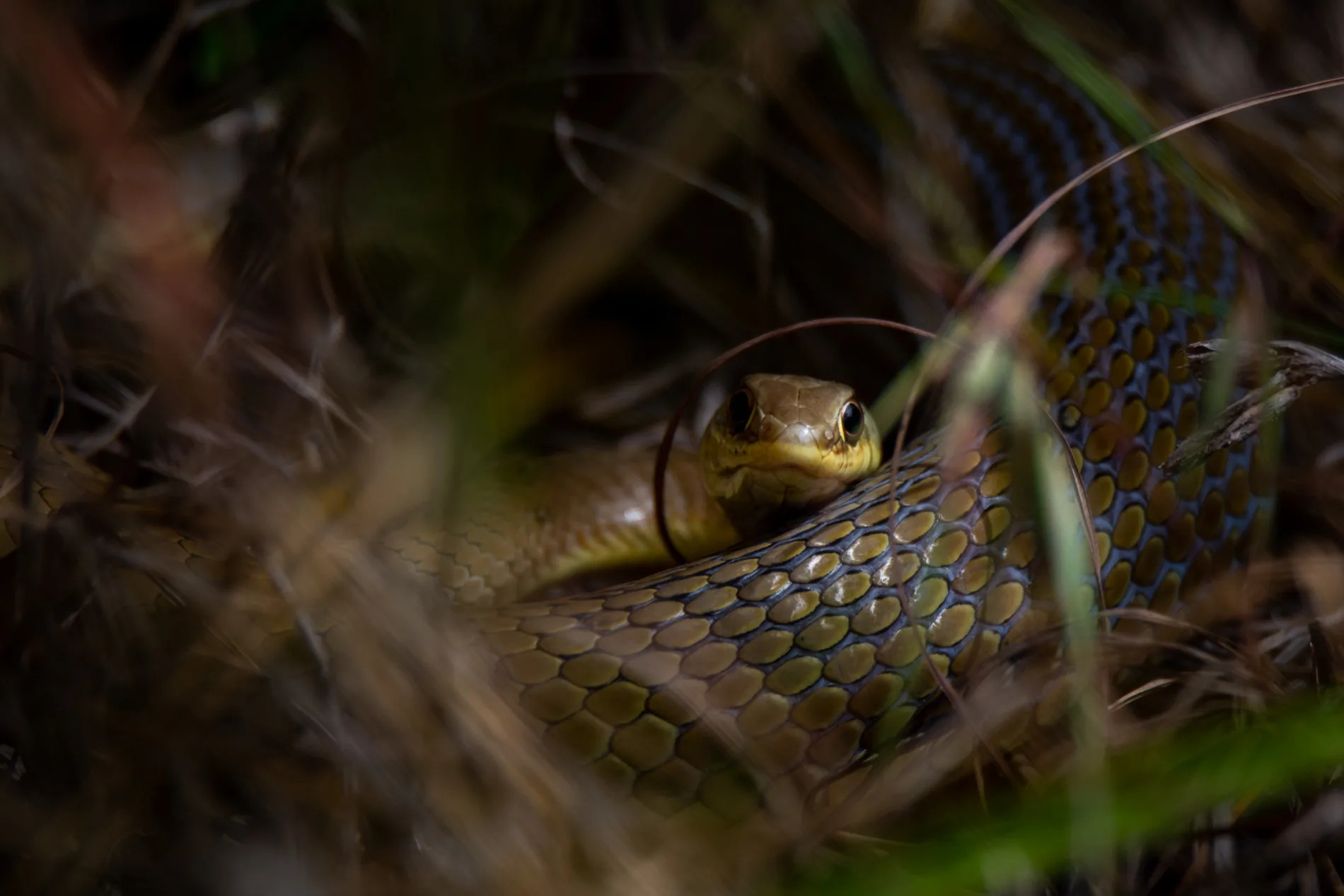
Also in the lodge, and my highlight of the week, a stunning olive grass snake takes a rest in the early morning with a very full belly. [f 6.3, 1/500, ISO 320, -0.33]
THIS WEEK A YEAR AGO
 Photograph by Adam Bannister
Photograph by Adam Bannister
When you have amazing light but no subject, you just shoot what you can. [f 5.6, 1/1000, ISO 5o0, +1]
TAGGED WITH: Maasai Mara, Angama Mara, Wildlife Photography, Lion, Elephant, Photographic Safari, Bird Photography, Lions of the Mara


